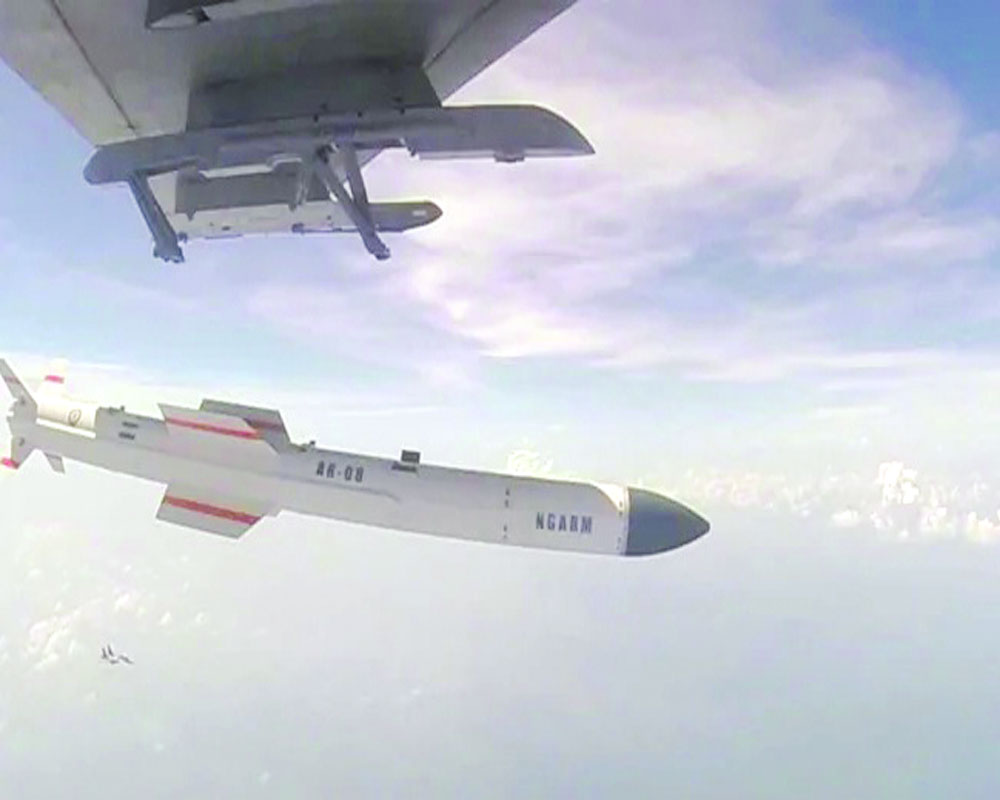RUDRAM adds strength to op readiness with DRDO successive missile tests
Sustaining the momentum of developing missiles against the backdrop of tension at the Line of Actual Control (LAC) in Ladakh, India on Friday successfully tested a new-generation anti-radar missile (RUDRAM) by firing it from the front-line fighter jet SU-30. Mounted on fighter jets, these missiles can subvert enemy radar and other communication systems. So far, the Defence Research and Development Organisation (DRDO) has test fired five different systems of missiles for operational readiness in the past few weeks.
These tests come at a time when China has deployed its long range missiles in the Tibet region forcing India to take counter measures. The missile shield close to the LAC now includes Brahmos supersonic missiles besides Nirbhay and Akash surface to air missiles.
As regards the latest test conducted off Balasore, Odisha, India achieved a major milestone by successfully firing an indigenously designed and manufactured new generation Anti Radiation Missile (RUDRAM).
The missile was successfully flight tested onto a radiation target located on Wheeler Island off the coast of Odisha. The missile was launched from SU-30 MK1 fighter aircraft. The RUDRAM hit the radiation target with pin-point accuracy, the DRDO said.
The missile is integrated on SU-30 MK1 fighter aircraft as the launch platform, having capability of varying ranges based on launch conditions. It has Inertial Navigation System (INS)-Global Positioning System (GPS) navigation with Passive Homing Head (PHH) for the final attack. The missile is a potent weapon for the IAF for suppression of enemy air defence effectively from large stand-off ranges, it stated.
The PHH can detect, classify and engage targets over a wide band of frequencies as programmed. With this, the country has established indigenous capability to develop long range air launched anti-radiation missiles for neutralising enemy radars, communication sites and other Radio Frequency (RF) emitting targets, officials said.
The missile has a launch speech of up to 2 Mach, twice the speed of sound. The fighter jets can now fire these missiles from long distance crippling the enemy radar system and conduct its mission deep inside enemy zone. The highly potent weapon system can be launched from a height ranging from 700 metres to 16 km and can hit targets within a range of 250 to 300 km.
Though relative calm prevails at the LAC now, the Indian security establishment is not taking any chances and the recent tests are an indication of its intent to maintain operational readiness.
The past few weeks saw the DRDO successfully test firing the 700 km range Shaurya missile. Capable of carrying 200 to 1,000 kg nuclear payload, it is the land version of submarine launched K-15 missile.
Officials rate Shaurya as one of the top 10 missiles in the world in its class with its high performance navigation and guidance systems, efficient propulsion systems, sophisticated control technologies and canisterised launch.
The missile can be launched from silos and canisters mounted on a truck and fixed on the ground, they said adding that it can be easily moved around. A truck itself can become a launching platform. Moreover, these missiles are difficult to be tracked by enemy satellites.
Keeping up the tempo of tests, scientists some weeks back successfully tested Hypersonic Technology Demonstrator (HSTDV). The capability has now placed India the elite category of nations having this capability. The US, Russia and China are other countries having these capabilities. The HSTDV gives India the flexibility of developing missile travelling at speed three to four times more than sound.
The indigenously designed and manufactured Brahmos supersonic cruise missile got a major boost after the successful test of its extended range system. Now, these missiles with most of its components manufactured within the country can hit a target at more than 400 km. The other important test included the supersonic missile assisted release of torpedo that targets submarines.


























